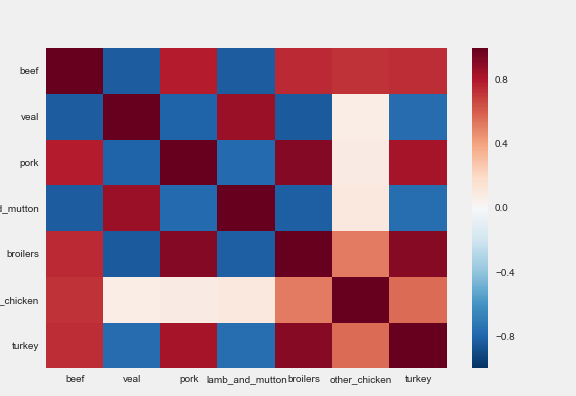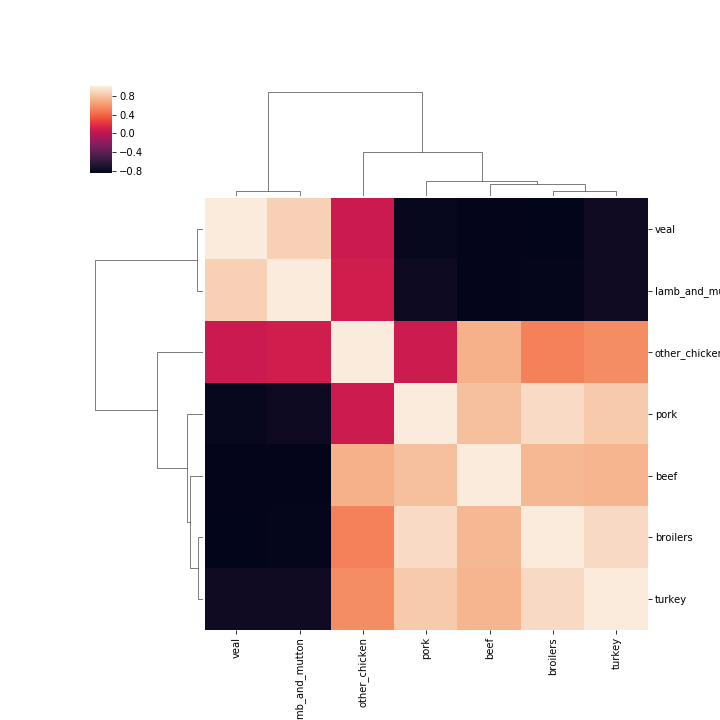Find relationships between multiple time series
Visualizing Time Series Data in Python

Thomas Vincent
Head of Data Science, Getty Images
Correlations between two variables
- In the field of Statistics, the correlation coefficient is a measure used to determine the strength or lack of relationship between two variables:
- Pearson's coefficient can be used to compute the correlation coefficient between variables for which the relationship is thought to be linear
- Kendall Tau or Spearman rank can be used to compute the correlation coefficient between variables for which the relationship is thought to be non-linear
Compute correlations
from scipy.stats.stats import pearsonr
from scipy.stats.stats import spearmanr
from scipy.stats.stats import kendalltau
x = [1, 2, 4, 7]
y = [1, 3, 4, 8]
pearsonr(x, y)
SpearmanrResult(correlation=0.9843, pvalue=0.01569)
spearmanr(x, y)
SpearmanrResult(correlation=1.0, pvalue=0.0)
kendalltau(x, y)
KendalltauResult(correlation=1.0, pvalue=0.0415)
What is a correlation matrix?
- When computing the correlation coefficient between more than two variables, you obtain a correlation matrix
- Range: [-1, 1]
- 0: no relationship
- 1: strong positive relationship
- -1: strong negative relationship
What is a correlation matrix?
- A correlation matrix is always "symmetric"
- The diagonal values will always be equal to 1
x y z
x 1.00 -0.46 0.49
y -0.46 1.00 -0.61
z 0.49 -0.61 1.00
Computing Correlation Matrices with Pandas
corr_p = meat[['beef', 'veal','turkey']].corr(method='pearson')
print(corr_p)
beef veal turkey
beef 1.000 -0.829 0.738
veal -0.829 1.000 -0.768
turkey 0.738 -0.768 1.000
corr_s = meat[['beef', 'veal','turkey']].corr(method='spearman')
print(corr_s)
beef veal turkey
beef 1.000 -0.812 0.778
veal -0.812 1.000 -0.829
turkey 0.778 -0.829 1.000
Computing Correlation Matrices with Pandas
corr_mat = meat.corr(method='pearson')
Heatmap
import seaborn as snssns.heatmap(corr_mat)
Heatmap

Clustermap
sns.clustermap(corr_mat)

Let's practice!
Visualizing Time Series Data in Python

